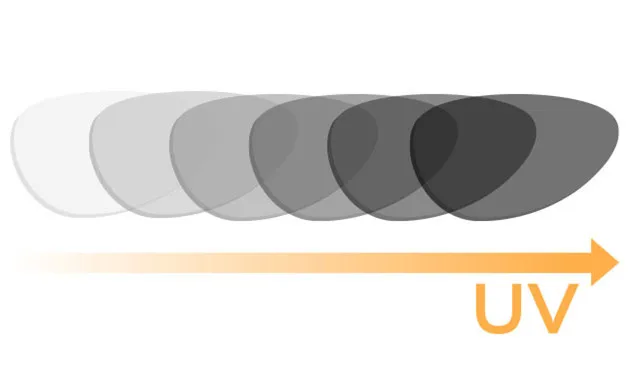Photochromic/Transition
Aogang
9001509900
1.67
65/70mm
MR-7, imported from Korea
33
1.34
> 97%
HC, HMC
SPH: 0.00~+-12.00 CYL: 0.00~-2.00
| Availability: | |
|---|---|
| Quantity: | |
Product Show
Product Description
Production | 1.67 Photochromic Film Lens |
Monomer | MR-7, imported from Korea |
Diameter | 65/75mm |
Abbe value | 33 |
Specific Gravity | 1.34 |
Transmission | >97% |
Guarantee years | 3~5 years |
Power range | SPH: 0.00~+-15.00 CYL: 0.00~-6.00 |
Product Features
Photochromic film lenses are available in nearly all lens materials and designs, including high indexes , bifocal and progressive. An added benefit of photochromic lenses is that they shield your eyes from 100 percent of the sun's harmful UVA and UVB rays.
Because a person's lifetime exposure to sunlight and UV radiation has been associated with cataracts later in life, it's a good idea to consider photochromic lenses for children's eyewear as well as for eyeglasses for adults.
Temperature And Its Effect On Photochromic Technology
The molecules in photochromic technology work by reacting to UV light. However, temperature can have an effect on the reaction time of the molecules. When the lenses become cold the molecules begin to move slowly. This means that it will take somewhat longer for the lenses to adapt from dark to clear. When the lenses become warm the molecules speed up and become more reactive. This means that they will fade back faster. It can also mean that if you’re outside on a hot sunny day, but sitting in the shade, your lenses will be quicker to detect the diminished UV rays and lighten in color. Whereas, if you are outside on a sunny day in a cold climate, and then move into the shade, your lenses will adjust more slowly than they would in a warm climate.
Photochromic film lenses, when exposed to sunlight/UV rays, will on average take approx 30 seconds to a minute to darken and will continue to darken for a further 10 minutes to full sunglasses tint/shade, returning to an almost clear state within 2 minutes and fully cleared within 5 minutes although excess temperature will affect this. |  |
The Benifit Of Wearing Photochromic Glass
Wearing eyeglasses can often be a pain. If it's raining, you're wiping water off the lenses, if it's humid, the lenses mist up; and if it's sunny, you don't know whether to wear your normal glasses or your shades and you may have to keeping switching between the two! Many people who wear eyeglasses have found a solution to the last of these problems by changing over to photochromic lenses
Coating Choice
 | Hard Coating: It also can be also anti-scratch coating, its purpose to help the lenses be destoried.
HMC EMI Coating : It also can be called anti-reflection(AR) coating or hard multi coating, the technology is coating another anti-reflective coating on the hard coating. Its purpose to perfectly reduce harmful ray and enhance the vision effect.
Super hydrophobic coating: It also can be called crazil coating, it takes the lenses waterproof, antistatic, anti slip and oil resistance which can keep half one year ~one year. |
Contact Us